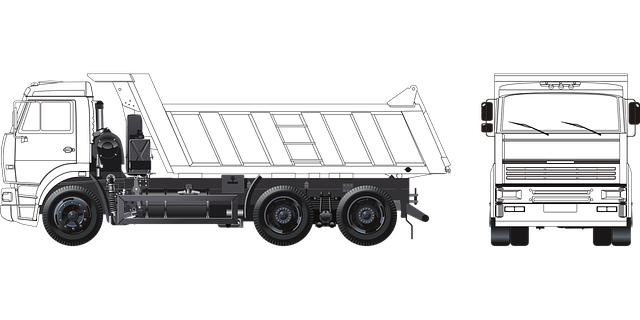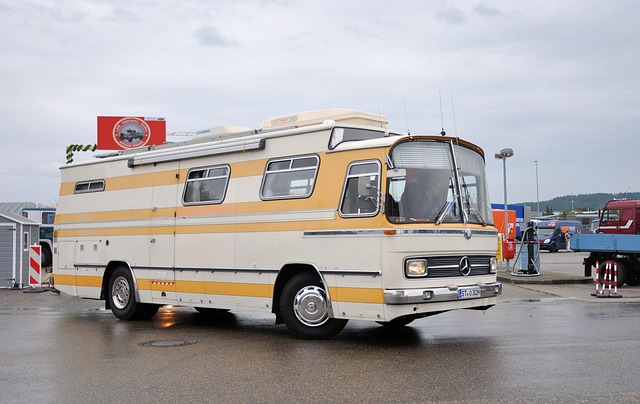Looking to register your car in California? This comprehensive guide walks you through every step, from understanding essential requirements to utilizing convenient online services. First, gather crucial documents needed for registration, including proof of ownership and insurance. Then, visit a local DMV office or use the efficient DMV online service. Complete the application form accurately and ensure your vehicle’s VIN is verified using a trusted source like the official DMV VIN Verifier for a seamless registration experience.
- Understand the Requirements for Car Registration in California
- Gather Necessary Documents for Vehicle Registration
- Visit a California DMV Office or Use the DMV Online Service
- Complete the Vehicle Registration Application Form
- Verify Your Vehicle's VIN (Vehicle Identification Number) with a Trusted Source like DMV VIN Verifier
Understand the Requirements for Car Registration in California

Before diving into the registration process, it’s crucial to understand the requirements for car registration in California. The California Department of Motor Vehicles (DMV) sets specific guidelines that vehicle owners must adhere to. One key step is ensuring your car passes a mobile vin verification or inspection, which involves checking the Vehicle Identification Number (VIN) to confirm its authenticity and condition. This process, often conducted by a certified inspector, ensures that the vehicle meets safety and emissions standards.
Additionally, you’ll need to gather essential documents such as proof of ownership, valid identification, and current registration fees. The DMV offers both online and in-person registration options, with the latter requiring an appointment for a more personalized experience. Understanding these requirements beforehand will streamline the car registration process, making it less daunting and ensuring a smoother transaction.
Gather Necessary Documents for Vehicle Registration

Before heading to the DMV for vehicle registration, make sure you have all the required documents ready. These include your car’s registration certificate or proof of ownership, which can be a title or a bill of sale. Additionally, you’ll need a valid driver’s license and proof of insurance, both in-hand and as digital copies on your phone.
A crucial step is to obtain a Vehicle Identification Number (VIN) inspection from a trusted source, such as a mobile VIN verifier. This ensures that the vehicle’s history is clean and helps prevent fraud. With the rise of digital tools, getting a mobile VIN verification has become more accessible than ever. This simple process can save you time and hassle during registration, ensuring a smoother experience at the DMV.
Visit a California DMV Office or Use the DMV Online Service

To begin the car registration process in California, one of two options can be chosen: visit a local DMV office or utilize the online services provided by the DMV. For those who prefer a more traditional approach, visiting a California DMV Office is straightforward. You’ll need to bring your vehicle and its relevant documents, such as proof of ownership and insurance. A DMV representative will assist you in filling out necessary forms and conducting a Vehicle Identification Number (VIN) inspection to verify the car’s information. This step ensures that your vehicle meets all legal standards before it can be registered.
Alternatively, the DMV Online Service offers a convenient, digital solution. You can start the registration process online by entering your vehicle’s details, including its VIN, which is a unique identifier crucial for tracking and authenticating the car. A mobile VIN verifier or inspection app can facilitate this step by providing accurate information quickly, allowing you to save time. Once your application is complete, you may be able to register your vehicle entirely online, depending on your circumstances, ensuring a seamless and efficient experience.
Complete the Vehicle Registration Application Form

To begin the registration process, you’ll need to complete the Vehicle Registration Application Form provided by the California Department of Motor Vehicles (DMV). This form requires essential information about your vehicle, including its make, model, year, and unique identifier – the Vehicle Identification Number (VIN). A DMV VIN verifier can assist in accurately extracting this critical data from your car.
Once you’ve secured your VIN, ensure it matches the details on your title and other relevant documents. This step is crucial for a smooth registration process. Consider using a mobile VIN verifier for convenience; this service allows you to verify your vehicle’s history quickly and efficiently, often with just a simple scan of the VIN.
Verify Your Vehicle's VIN (Vehicle Identification Number) with a Trusted Source like DMV VIN Verifier

Before you begin the registration process, it’s crucial to ensure your vehicle’s authenticity by verifying its Vehicle Identification Number (VIN). This unique 17-character code is like a fingerprint for your car and can be used to access critical information about its history and specifications. A trusted source like the DMV’s VIN Verifier service allows you to cross-check this data, ensuring it matches the vehicle you intend to register.
Using a mobile vin verifier app is an efficient way to perform this inspection. These tools provide a quick and easy method for comparing your VIN against state databases, helping to avoid any potential issues during the registration process. By confirming your VIN early on, you can save time and effort, ensuring a smoother car registration experience in California.
Registering your car in California is a straightforward process, but understanding the requirements and gathering the right documents is essential. By visiting a DMV office or using their online service, you can complete the vehicle registration application form efficiently. Additionally, verifying your vehicle’s VIN with a trusted source like the DMV VIN Verifier ensures accuracy, which is crucial for a successful registration. With these steps, you’ll be on your way to legally operating your vehicle in California.
